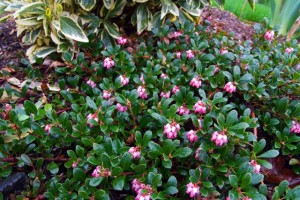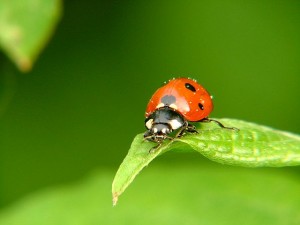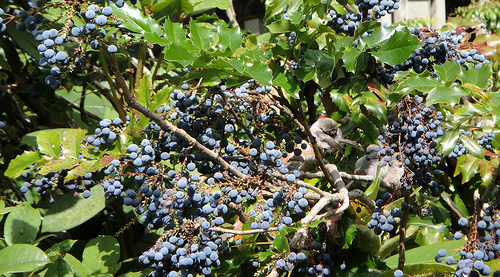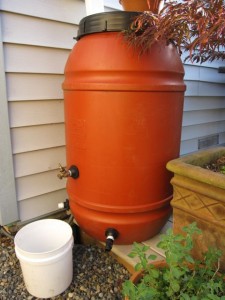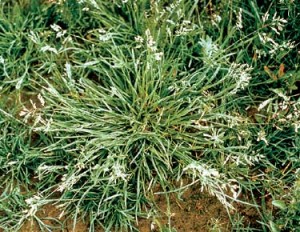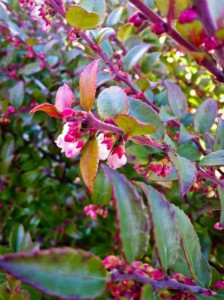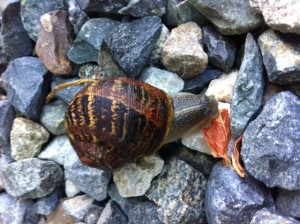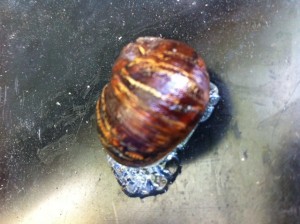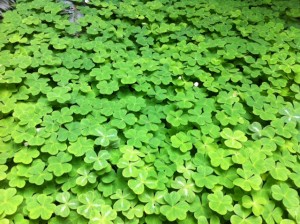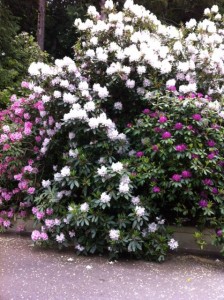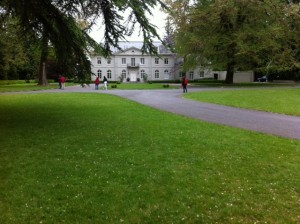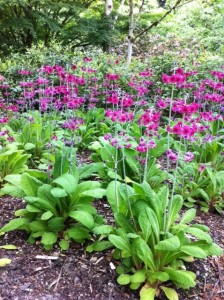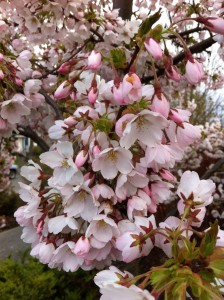Brown lawns aren’t necessarily dead lawns – care for your lawn during a hot, dry summer
Posted on August 22nd, 2012 by Andy
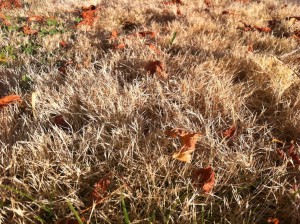
Dry, brown lawn in August. Photo by Ecoyards.
It’s almost a given around Seattle that lawns turn brown during the dry summer months. It’s too expensive to keep watering grass during the summer, so many of us in the Northwest choose to let the lawn go dormant knowing it’ll bounce back in the fall. There’s good incentive to lay off watering lawns during the summer months. Seattle, for example, charges three tiers of water rates from May 16 to September 15 when water is in greatest demand and shortest supply; customers are charged progressively more as their water use increases.
Brown lawns aren’t necessarily dead lawns. Turfgrass goes dormant as a survival mechanism. Lawns can tolerate about 4-6 weeks without water without experiencing too much stress or damage, if the temperatures are fairly even. If the mercury skyrockets, you’ll likely to see some damage in about 3 weeks or less. Turfgrass goes dormant to protect themselves from drying out. In this protective mode, it sends what available moisture it has to its crown, roots and rhizomes. The grass stops growing and turns brown.
Here are some tips for how to care for your lawn during dry conditions:
- Keep off the grass if possible. Walking on the grass can stress it out.
- Dormant lawns don’t need fertilizers. It’s not necessarily a bad thing, but the grass won’t be able to take all that food in.
- Improve the soil during the spring and fall by aerating, topdressing and overseeding as appropriate. Healthier soil means your grass has more moisture available to it root system during the hottest months.
- Keep grass high, leave clippings on the grass to add more moisture to your lawn.
- Weed as much as you can during the spring, before the dry months arrive. Weeds hog up precious moisture and nutrients that grass needs.
- If the drought persists beyond a few weeks, it’s a good idea to give your lawn a deep weekly drink (about 1 inches). That may not be enough to turn it emerald again, but it will help it stay alive. Water in the morning so you won’t lose water to evaporation. A smart irrigation system can provide just the right amount of irrigation to the lawn with little-to-no wasted water.
Filed under: Seattle Landscape Maintenance,Seattle Lawn Care | Permalink | No Comments
